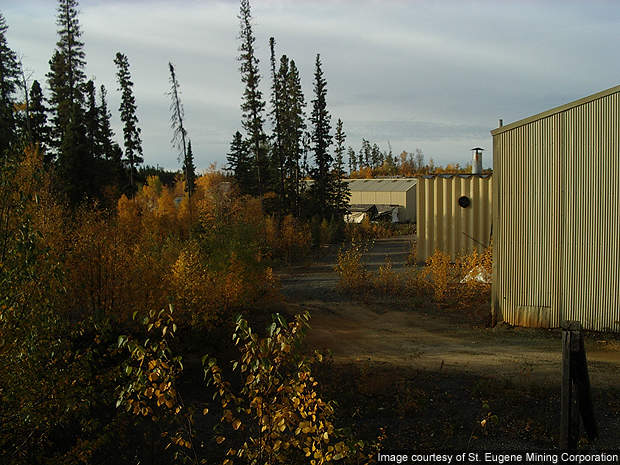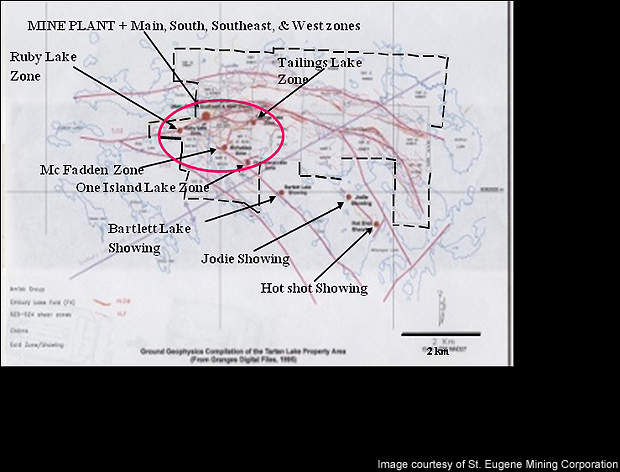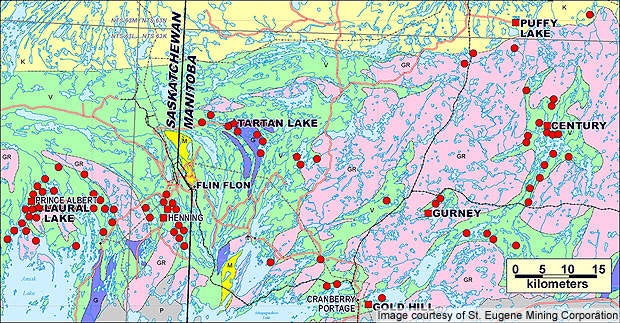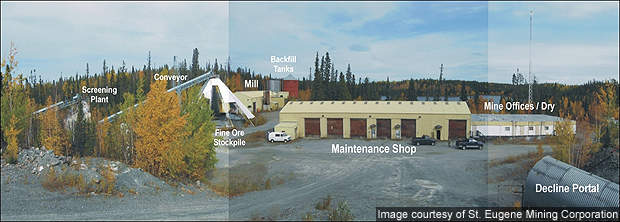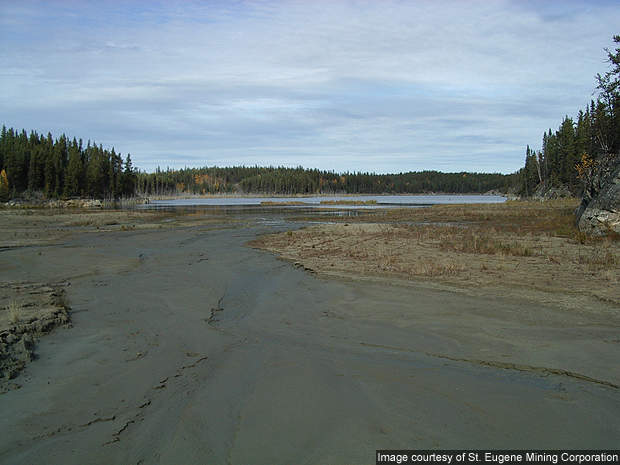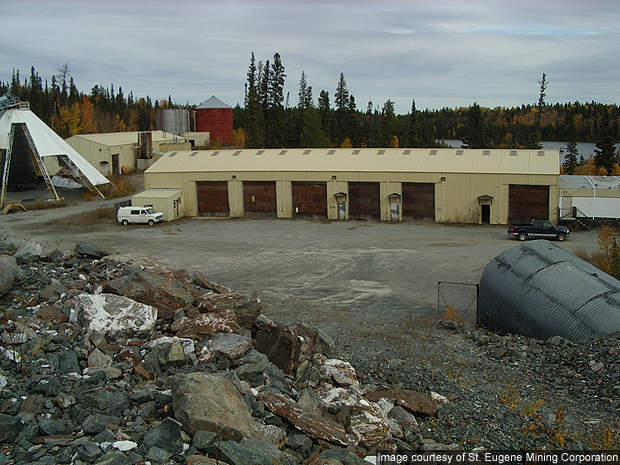Tartan Lake gold mine is located in north-western Manitoba, Canada, about 12km north-east of the town of Flin Flon. Explored since the 1920s, the mine began production in May 1987 and produced 245,000Mt of ore with 45,000oz of gold until 1989 when it was shut down due to unfavourable economic conditions. The mine has remained dormant since then but has changed ownership twice.
The mine is currently owned by St. Eugene Mining Corporation who acquired the property from Claude Resources in September 2008 for of C$3m. St. Eugene acquired the whole Tartan Lake project, which includes a 440t/d concentrator, associated infrastructure and a 1000ft decline access to existing developed mining blocks.
St. Eugene began the initial activities at the mine on 5 February 2010. Approximately $400,000 has been directed towards the project and it will be developed through a two stage operation. Stage one will verify the mineral resource estimated during its closure. During stage two, dewatering of the mine will be carried out in order to confirm the continuity of gold grades within the developed stoping blocks, as well as verifying the suggested mining method.
Tartan Lake reserves
The mine includes historic mineral resources together with a number of known exploration targets. At the time of its closure, the mine contained an estimated 375,000Mt of gold resources graded at 6.27g/t of Au to a depth of 500m. Gold resources developed to a depth of 300m at closure have been estimated at 129,660Mt graded at 6.25g/t of Au.
Geology and mineralisation
The mine lies within the Flin Flon greenstone belt that hosts rocks metamorphosed to sub-greenschist facies to lower amphibolite facies. Gold deposits are primarily found within a strong, west-striking Tartan Lake shear zone complex that measures 30m to 50m in width and plunges steeply towards the north.
The main zone extends 500m in length and contains the shear zone along the contact formed between the hanging wall rocks of the Amisk group in the north and the layered footwall gabbro/diorite intrusive in the south.
The zone includes a number of subparallel gold mineralisation lenses that hosts the main zone at or close to the interceptions of the anastomising shear zone.
The anastomising shear zone is east-west, north-east to south-west and north-west to south-east oriented in relation to the mine grid.
The structures of the main zone are partially connected with the south zone structures. The 450m long south-east zone that lies east of the same length south zone occurs on the same east-west trending structures as the south zone. Structures of the south zone link partially to the 300m long West Baseline zone that extends from the East Baseline zone.
Mineralisation of the west zone occurs within the main zone and south zone related structures. All the mineralised zones are open at depth and along strike to the west including the main zone, west zone and the south zone. Gold mineralisation occurs with pyrite, chalcopyrite, scheelite, rutfie, tellurides and monazite.
Mining
Mining at the deposit has been conducted using the conventional shrinkage method. Approximately 2.4m wide stopes were developed. Ore was extracted at a mining rate of 85,000Mt per year (250Mt/d). The mine production grade has been 7.8g/t. To transport the ore from the mine site to the processing facility, haul trucks were used.
Contractors
MineTech International, an engineering consulting company, has been appointed by St. Eugene to work on multiple activities associated with the advancement of the project towards production.
The scope of MineTech International’s activities will include developing engineering plans to be sent with a permit application for dewatering of the mine, update the current mine discharge license and guidance on the corrective measures for it and to offer assistance on several studies and operations designed to increase the mine’s total asset value.
In addition MineTech International will also offer personnel from its geological and engineering department to complete the study focusing on upgrading the resource base of the mine.

